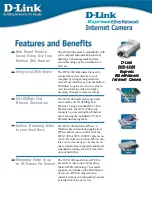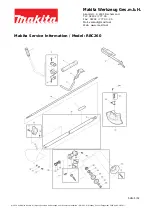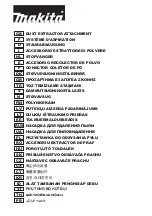
-
3
-
PREPARING TO CHARGE
1. Most motor vehicle manufacturers recommend that the battery should be disconnected from the vehicle’s electrical
system before being charged.
Any voltage peaks that occur may cause defects in these electronic modules. Therefore the battery should be
disconnected from the electrical system before being charged.
Always remove grounded terminal from battery first.
2. Study all battery manufacturer's spe
cific
precautions, such as removing or not removing cell caps while charging, and
recommended rates of charge.
Also refer to the instructions in the owner’s manuals for the car, radio, navigation system, etc.
3. Clean battery terminals. Take care to keep corrosion from coming in contact with your eyes.
4. If required, add distilled water in each cell until battery acid reaches levels
specified
by battery manufacturer. This helps
purge excessive gas from cells. Do not
overfill.
For a battery without cell caps, carefully follow manufacturer's recharging
instructions.
5. Be sure area around battery is well ventilated while battery is being charged. Gas can be forcefully blown away by using a
piece of cardboard or other non-metallic material as a fan.
BATTERY TYPES
Three basic types of lead-acid batteries can be given a charge with this charger:
(1) Conventional and Low Maintenance
(2) Maintenance Free
(3) Deep Cycle
Conventional and Low Maintenance Batteries.
These are the antimony/lead batteries. Conventional/Low Maintenance
batteries require periodic addition of water to the acid solution (electrolyte). Additional water may be added by removing the
filler caps located on the top of the batter
y.
IMPORTANT:
When antimony is known to be one of the materials used in the battery's construction, that battery is a Low
Maintenance/Conventional type.
CAUTION:
Some Low Maintenance batteries have a relatively smooth top without any apparent battery
filler
caps. If, however,
the battery manufacturer/distributor recommends periodic checking of electrolyte level and provides access to the battery for
water additions, the battery is probably a Low Maintenance/Conventional type.
Maintenance Free Batteries.
These are calcium/lead batteries and normally do not require water additions. Therefore,
filler
caps have been removed from the battery surface. These batteries will have a smooth or sealed appearance.
Deep Cycle Batteries.
These heavy duty batteries are used in boats, construction equipment, sump pumps, etc. They are
normally marked
DEEP CYCLE
on the outside of the case.
OPERATION
NOTE:
It is important to determine the battery type before charging. (See BATTERY TYPES)
CHARGING BATTERY OUT OF VEHICLE
When charging battery out of vehicle, take care to determine the battery type. To reduce risk of a spark near battery, follow
these steps when battery is outside vehicle.
WARNING:
A spark near the battery may cause battery explosion.
WARNING:
When removing battery from vehicle or boat, disconnect grounded pole
first.
When disconnecting, make sure all
accessories are off, so as not to cause an arc.
NOTE:
A marine (boat) battery must be removed and charged on shore. (To charge on board requires special equipment
designed for marine use.)
WARNING:
When reinstalling battery
, attach the ground post first.
1. Check polarity of battery posts. Battery case will be marked by each post: POSITIVE (POS, P, +) and NEGATIVE (NEG, N, -).
NOTE:
The positive battery post usually has a larger diameter than the negative post.


























